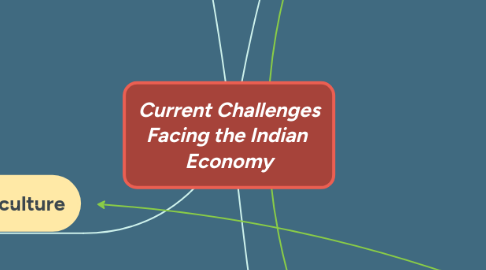
1. Unemployment
1.1. Types of Unemployment
1.1.1. Cyclical unemployment
1.1.2. Frictional unemployment
1.1.3. Structural unemployment
1.1.4. Open unemployment
1.1.5. Disguised unemployment
1.1.6. Underemployment
1.1.7. Seasonal unemployment
1.1.8. Educated unemployment
1.1.9. Technological unemployment
1.2. Causes of Unemployment
1.2.1. Low Rate of Economic Growth
1.2.2. Low Growth Rate of Agricultural
1.2.3. Rapid Population Growth
1.2.4. Use of Capital Intensive Techniques
1.2.5. Low Rate of Capital Formation
1.2.6. Defective Education System
1.2.7. Inadequate Employment Planning
1.2.8. Weak Manpower Planning
1.2.9. Decline of Cottage and Small-scale industries
1.2.10. Migration of Rural Population
1.2.11. Labor Laws
1.2.12. Failure to Develop Project Planning Large Employment
1.3. Special Employment Generation Programmes
1.3.1. Jawahar Gram Samridhi Yojana
1.3.2. Employment Assurance Scheme
1.3.3. Sampoorna Grameen Rozgar Yojana
1.3.4. Swarna-jayanti Shahari Rozgar Yojana
1.3.5. Swaranjayanti Gram Swarozgar Yojana
1.3.6. Prime Minister's Rozgar Yojana
1.3.7. Mahatma Gandhi National Rural Employment Guarantee Scheme
2. Human Capital Formation
2.1. Human capital formation is the process of adding to the stock of human capital over time. Human capital can be developed through the creation of skilled, trained, and efficient labor force by providing better education, health care facilities, etc.
2.1.1. ROLE OF HUMAN CAPITAL FORMATION
2.1.2. 1. helps in absorbing new techniques 2. 2, increase in labor efficiency 3. adds to productive capacity 4. instrument of economic changes 5. improves quality of life
3. Agriculture
3.1. Agricultural Marketing
3.1.1. Defects
3.1.1.1. Distress sale
3.1.1.2. Multiplicity and Malpractices of middlemen
3.1.1.3. Lack of storage facilities
3.1.1.4. Lack of marketing information
3.1.1.5. Low bargaining power of farmers
3.1.1.6. Inadequate Storage facilities
3.1.1.7. Lack of grading and standardisation
3.1.1.8. Multiplicity of marketing charges from the farmers by marketing agencies
3.1.2. Government Schemes to improve agricultural marketing
3.1.2.1. Establishment of regulated markets
3.1.2.2. Storage and warehouse facilities
3.1.2.3. Uniform standard weights
3.1.2.4. Grading and standardisation
3.1.2.5. Marketing Information
3.1.2.6. National Agriculture Market
3.1.2.7. State trading in foodgrains
3.2. Agricultural Diversification
3.2.1. Definition
3.2.2. Need for agricultural diversification
3.2.3. Two aspects of agricultural diversification
3.2.3.1. Diversification of crop production
3.2.3.2. Dversification of production activity
3.3. Organic Farming
3.3.1. Meaning
3.3.2. Need
3.3.3. Benefits
3.3.3.1. Protection of environment
3.3.3.2. Increased employment oppurtunities
3.3.3.3. Improvement in soil quality
3.3.3.4. Inexpensive inputs
3.3.3.5. Provision of Healthy and Nutritional Food
4. Poverty
4.1. Definitions
4.1.1. Relative
4.1.2. Absolute
4.2. Vicious Cycle of Poverty
4.3. Poverty and unemployment alleviation schemes
4.3.1. Rural
4.3.1.1. Jawahar Gram Samridhi Yojana (JGSY)
4.3.1.2. SGSY
4.3.1.3. EAS
4.3.1.3.1. work for farmers during the lean season
4.3.1.4. Food For Work Programme
4.3.1.5. MGNREGA
4.3.1.5.1. 100 days of guaranteed self employment
4.3.2. Urban
4.3.2.1. Swarna-jayanti Shahari Rozgar Yojana (SJSRY)
4.3.2.1.1. Urban Self-Employment Programme
4.3.2.1.2. Skill Training - urban poor
4.3.2.1.3. Urban Wage-Employment Programme
4.3.2.1.4. Urban Community Development Network
4.3.3. Both
4.3.3.1. PMRY
4.3.3.2. NSAP
4.3.3.2.1. National Old Age Pension Scheme
4.3.3.2.2. National Family Budget Scheme
4.3.3.2.3. National Maternity Benefit Scheme
4.3.3.3. Indira Awas Yojana
4.3.3.4. SSY
4.3.3.5. Welfare Schemes

